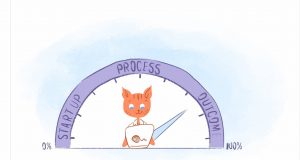Your customer service team plays a vital role in keeping clients happy and enabling business growth. From dealing with varying degrees of customer emotions to putting the required effort into solving problems as quickly as possible, it can be a very demanding job. If employees need to perform at their best, then providing them with the ideal shift schedule can be your competitive advantage.
A customer service representative’s shift schedule will impact their overall mental and physical health, and how often they’ll need breaks to keep up energy levels. Shift schedules also disrupt sleeping patterns, which can affect an employee’s durability. All these ties into the quality of customer service you end up delivering, which makes it essential for organizations to have balanced shift work schedules in place.
What is a Shift Schedule?
A shift schedule is an organized time table, created to evenly distribute workloads across team members, while also making sure there are enough people available for all working hours. For example, in the case of customer service, if you are providing 24×7 support, then you’ll need people working in day shifts, night shifts as well as a few agents on the weekends. So you’ll need a schedule that does not overwork any of your employees but adequately covers all days and time zones.
What are the Benefits of a Shift Schedule
The benefits of a shift schedule extend beyond that of having a more organized way of working. The impact can be seen in the metrics that matter for customer service:
#1 Handle your busiest times effectively
Knowing what part of the day your support team receives the highest number of tickets lets, you plan your shifts accordingly and handle the workload better. Without using a shift plan, you’ll be flying blind, and that might not yield the best results in terms of handling ticket volume or delivering excellent customer experience.
#2 Provide faster resolution
With shift schedules in place, you automatically improve your resolution times because of having enough people to manage the workload for the entire day. There is less carryover of tickets from one shift to another, which reduces the time taken to respond to customers.
#3 Manage your overheads better
By establishing how many people work in each shift, scaling becomes easier and more transparent. Otherwise, you end up recruiting higher or lower than the required number of people. But with numbers backing up your hiring decisions, your estimations get better, and your overall labor costs go down.
#4 Better employee productivity
Knowing how many hours you’ll need to work in a week as well as what shift you’ll be in goes a long way in preparing employees mentally for the tasks ahead. It helps boost morale because you are pre-determining what shift they’ll be working in and thereby eliminating the uncertainty that can often lead to improved performance and better focus. It also means agents get used to the workload and the pattern of customer issues in their shift, which improves productivity.
4 Types of Shift Schedules with Pros and Cons
#1 Rotating Shift Schedule:
Rotating shifts are most common in customer service because it gives employees some flexibility and makes it possible to provide 24/7 support. Agents are assigned a particular shift for each day, and every member of the team can rotate between these shifts every week, month, or any other time interval based on what the support requirements are for an organization.
For example, an employee who works the night shift for a month can switch to the day shift for the next month.
Pros:
- The shifts and hours of work are distributed uniformly
- Agents can plan their personal events in advance.
- It is flexible enough that there are always enough people to provide 24/7 support
Cons:
- Challenging to implement if you don’t have enough members to cover each shift
- If the rotations are frequent, it gets difficult for agents to acclimatize to the timings
- Manning teams around the clock will also require significant investment in infrastructure and larger teams.
What’s the ideal rotation schedule?
Based on the size of your team and the number of time zones that you have to support, you’ll need to vary how often your agents rotate between shifts. But ideally, each agent should at least work for 3 months in one particular shift or time zone to ensure they get used to it. Having weekly shifts can be problematic since it’ll affect sleeping patterns and not allow them to understand the customers and types of issues for that time-zone. It’s also necessary to ensure there is an overlap between shifts so you have enough coverage for people who might be on leave.
#2 Fixed Shift Schedule
The fixed shift schedule is just one shift timing with a set number of hours. You choose a particular number of hours, the number of working days in a week, and every member of your customer service team will follow that schedule. A standard 9-5 work timing for all employees in an organization from Monday to Friday is the most common form of a fixed shift schedule.
Pros:
- Easier planning and cost estimations for managers
- Agents can get used to their work schedule and have a steady lifestyle
Cons:
- Cannot provide 24/7 support with a fixed schedule
#3 Dupont Shift Schedule
The DuPont shift schedule uses a combination of 4 teams doing 12-hour shifts to achieve 24/7 coverage. Here’s how the 4-week cycle is broken down for each team:
- First is 4 consecutive night shifts, then 3 days off,
- Followed by 3 consecutive day shifts, then 1 day off
- Followed by 3 consecutive night shifts, then 3 days off
- And finally 4 consecutive day shifts, with 7 days off
The idea is to have each team working for long stretches to have more consistency in support while avoiding the need to have teams overlapping their shifts to cover for others.
Pros:
- The schedule is uniform across all agents with no policy of taking turns to rotate.
- The week off is a very appealing break for agents
Cons:
- Agents can get really stretched because of the 12-hour shifts
- While agents get enough time off, it becomes difficult to readjust after longer breaks
#4 Ad-hoc Shift Schedule
Ad-hoc, as the name suggests, is purely based on requirement and is used to schedule shifts that cover for employees on leave or used in situations where the need changes from week to week. It is usually not a recommended shift work schedule for customer service because of how unpredictable and irregular it can be for agents.
But it can also be used as a complement to your primary schedule. For example, during weekends, if you only need 4-5 people for support across 24 hours, you can have agents on standby and call them on an ad-hoc basis to give the assigned team members flexibility in case some of them need to go on leave.
Pros:
- Easy to create the schedule and a flexible way for managers to fill out their weekly requirements
Cons
- Disturbs sleep patterns because agents have to come at different times every day.
- It can bring down morale because of uncertainty and untimeliness of the shift.
How to Create a Shift Schedule?

When trying to make the perfect shift schedule, several factors have to be considered. Here are 4 steps to help you create an ideal work schedule for your employees:
- Identify your requirements:
The first step is to collect valuable information on how your team operates. A few data points to take into consideration are:
-Time intervals with the highest Ticket volumes. For, e.g., For a retailer, December is usually the busiest period with shoppers probably calling with queries between 7-9 PM
-Number of customers & their country-wise distribution
-The most commonly asked types of questions
This will give you a baseline you can work with to understand your schedule requirement
- Determine your workforce strength:
With the desired information, your next step is to know if you have the required number of employees to cover all shifts and time zones. Based on the number of shifts you’ll be needing and the number of customers, you can take a call on whether you’ll need to hire additional resources or not.
- Decide on schedule type and rotation policy
Once you’ve taken stock of the number of employees you have and how many hours a day you have to provide support for, you can make the decision on the type of schedule. Usually, in customer service, 24/7 support is the norm, in which case a rotation shift schedule works best. Decide on how many shifts you’ll have and how often you need to rotate your agents. This can be either weekly, monthly, or variations of these periods.
- Add ad-hoc and on-call schedules to fill gaps
After setting up your finalized shift schedule, you’ll still have days when people might be on leave or have sudden emergencies, which might leave you without replacements. For these scenarios, you can create ad-hoc or on-call schedules so you can have someone fill in for people who aren’t available during a particular shift.
Conclusion
Having a shift schedule that works for everyone is the objective to keep in mind when creating your plan. Your agents need to be at their best possible condition to perform well every day. Using rotations also helps break the monotony and gives your team exposure to different tasks and scenarios. Overall, a well-planned shift schedule will directly impact the customer experience you deliver, and how well you can retain clients and grow your customer base.
Business & Finance Articles on Business 2 Community
(79)







